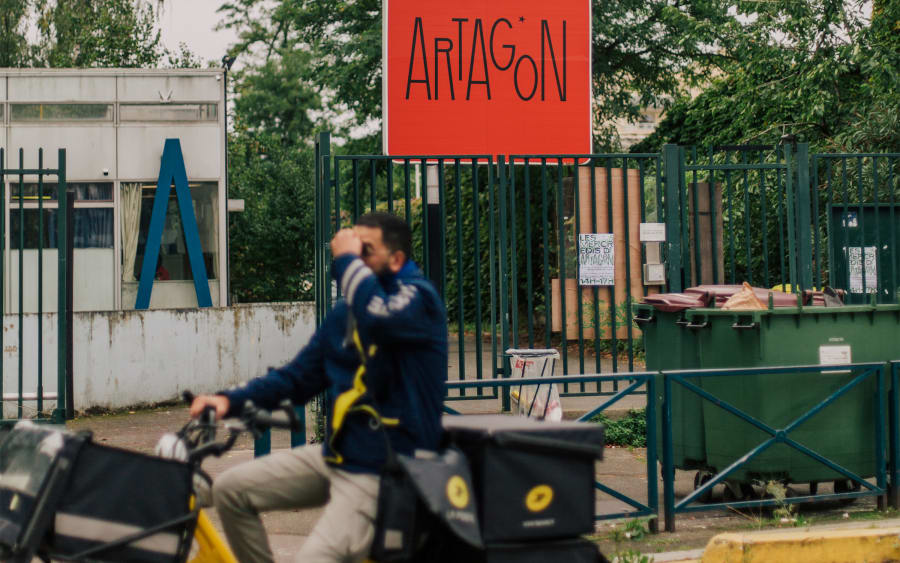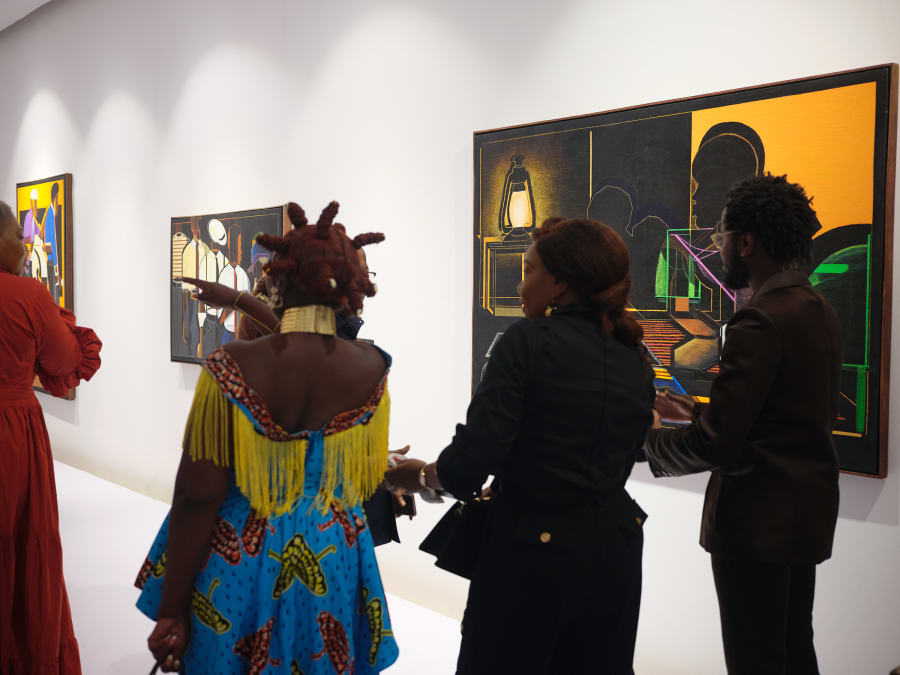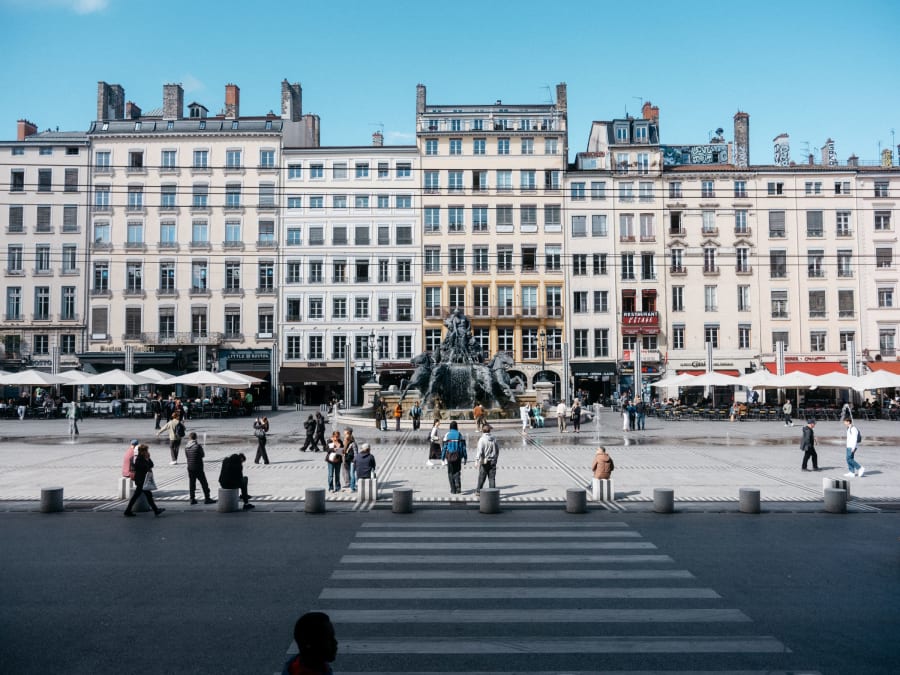Perched majestically along the banks of the Loire River, the Domaine de Chaumont-sur-Loire, in Western France, evokes both the grandeur of a medieval fortress and the refinement of a residence devoted to the arts of its time. Drawn by the splendor of renovations commissioned by the Princesse de Broglie in the early 19th century, luminaries such as actress Sarah Bernhardt, composer Francis Poulenc, and the renowned French writer Madame de Staël found sanctuary in its tapestry-lined salons and the verdant paradise of its grounds. This haven, despite its illustrious history, is resolutely oriented toward the future.
Designated an Historic Monument in 1840, the estate is currently hosting its ‘Saison d’Art’, featuring some fifteen works produced specifically for the occasion. Yet this enchanting venue, which served as a reference to Walt Disney when creating his company's logo, is not alone in nurturing such an ambitious project. Throughout a region distinguished by extraordinary cultural heritage, sprawling vineyards, and abundant natural beauty, initiatives bridging centuries-old architecture with contemporary art are proliferating.
The dialogue between Chaumont-sur-Loire and contemporary creation was established in 2008 by Chantal Colleu-Dumond, a former director of International Affairs at the Ministry of Culture. Until November 2, 2025, works by Claire Trotignon, Nicolas Alquin, and Sophie Zénon will join approximately 40 permanent installations that have taken root on the property over time. Colleu-Dumond is convinced of art’s storytelling potential. ‘We searched at length for a place to install Eva Jospin’s Folie (2018),’ she explains. ‘We wanted visitors to feel as though this grotto had always been here.’
Chaumont also benefits from triennial commissions supported by the Centre-Val de Loire region. For its third iteration in 2014–16, Mexican artist Gabriel Orozco examined the tapestries in the guest chamber of the Prince and Princesse de Broglie, the château’s last private owners. His ‘Fleurs fantômes’ – a series of paintings inspired by the rooms’ aged wallpaper – paid homage to vanished memories. This year, taking its place beneath the stable awning, Daniel Firman’s sculpture of an elephant balanced on its trunk evokes the incongruous gift presented to the princess by the Maharaja of Kapurthala in 1898.
This ‘perfect placement of works,’ as Colleu-Dumond calls it, kindles fresh perspectives on both the art and the historic setting. The installations also reveal a mise en abyme around environmental questions, as with the duo G&K, who for their work approached the primeval Białowieża Forest in Poland as a living entity requiring protection. Such projects align with the ecological values cherished by the estate, which also hosts an international garden festival. South of the château, the model farm designed by architects Paul-Ernest Sanson and Marcel Boille in the early 20th century draws inspiration from rural architectural treatises of the 1850s–70s.
Twenty miles downriver from Chaumont stands the Château de Chambord, an architectural eccentricity erected in 1519 at the request of King François I. Its elegant turrets and spiral staircase have fascinated visitors for centuries – and since 2011, it has offered them contemporary projects through artist residencies. For its director general, Pierre Dubreuil, this historic French monument, listed as a UNESCO World Heritage site, prioritizes conveying the history of its glorious past. The inclusion of contemporary perspectives magnifies this legacy by positioning it as a powerful source of inspiration. ‘We invite artists whose work resonates with the site, and we aim to open up culture to a wide audience through an understanding of French history, particularly the Renaissance, and the arts. The National Domain of Chambord fulfills more than ever its primary mission: to serve the greatest number of people possible,’ he explains.
In 2023, Lionel Sabatté’s exhibition ‘Pollen Clandestins’ presented more than 150 portraits created from dust collected on-site. This year, priest and stained-glass artist Kim En Joong was invited to spend a month at the château. ‘Kim En Jong utilizes the light circulating through the building as well as its spiritual dimension to illuminate the “soul” of his works, as well as that of its visitors,’ explains Dubreuil, who previously headed the French Office for Biodiversity. The development strategy, initiated by his predecessors, has proved effective. Attendance rose from 730,000 visitors in 2010 to nearly 1.2 million in 2024, a record for the second consecutive year, making the estate France’s second-most-visited château after Versailles.
Other châteaux and estates in the Loire Valley – Château du Rivau, Château d’Oiron, and the Abbaye Royale de Fontevraud – share a ‘Contemporary Route’, inaugurated in 2022. This partnership between four heritage sites, which extends to the Centre de Création Contemporaine Olivier Debré, offers visitors the chance to explore the region through the prism of contemporary art, even providing a road map.
The Maison Bouvet Ladubay, for its part, has been programming works for 30 years. The relationship between heritage promotion and artistic activity is sometimes inverted, raising questions about integrating heritage into daily life. Le Voyage à Nantes, for example, is an annual itinerant festival whose works spread throughout the city. In 2017, the historic Châteaux des ducs de Bretagne hosted a slide-staircase on its ramparts, designed by Tact Architectes and Tangui Robert.
Certain châteaux, now privately owned, have made contemporary art their priority, using heritage as a setting. In 2015, the local government transferred Château de Montsoreau to the collector Philippe Méaille, who renovated it before presenting the most significant collection of the Art & Language movement. Meanwhile, 150 kilometers away, Château de Beaugency has pushed the concept of historical support further still, transforming intervention into a kind of additional archaeological layer, now inseparable from the site itself.
In 2020, artist and architect Jérémie Bellot purchased the property with his partner, Anne-Sophie Acomat. Their goal: to revitalize the former estate, whose museum of art and history had struggled to find an audience. The idea was to do this through digital art installations created in an on-site open laboratory. ‘To create a connection between architectural heritage, digital arts, and light,’ Bellot explains. ‘Visiting the rooms becomes an encounter between the works and the place,’ he adds.
Bellot, known for the digital mapping he created for the reopening of Notre-Dame de Paris, reminds us that although sometimes neglected, digital arts have their rightful place within the arts, following in the traditions of Op Art and Kinetic Art. In the 16th-century oratory, the projection of an iris onto the fresco of Christ brings the château into the 21st century. Works are presented without adding walls or partitions, respecting the original proportions of the space. The site now welcomes 20,000 visitors annually and aims for an average of 30,000 in the coming years.
That contemporary art, is the ideal catalyst for attracting audiences and bringing collections to life beyond museum walls has really caught on. In March 2023, the Centre-Val de Loire Region and the Centre Pompidou announced a four-year partnership under the Nouvelles Renaissance(s) program. The Paris museum, which will close gradually for renovations over five years, intends to build a new model of regional activities and has already shown 40 works, including Alain Doret’s pieces at the Royal Château de Blois and a textile installation by Sheila Hicks at Château du Rivau, displayed during the 2024 Ar(t)chipel festival.
Recently, Château d’Azay-le-Rideau appointed someone specifically tasked with developing a contemporary program. For Benoît Grécourt, who assumed the position last October, this initiative makes sense only if the works have direct resonance with the site: ‘otherwise, it doesn’t work,’ he confides, ‘especially since in a historic monument, contemporary art reaches an opportunistic audience, who didn’t come specifically for that,’ he adds. Furthermore, Grécourt considers the principle of discovery to be one of the purposes of public service. Artist Volker Hermes is currently showing 'Hidden Portraits', an exhibition of photomontages created from ancient portraits. The works enter into dialogue with the collection of historical portraits assembled by the former owner, Marquis de Biencourt.
Whatever the stakes, the diversity of approaches in châteaux throught the Loire address a fundamental question: How to strike the right balance between looking after heritage and bringing it to life through contemporary works? The solution may lie in the idea of temporality. At Chaumont-sur-Loire, while 40 permanent works exist today, most installations from the Saison d’Art, are destined to disappear. ‘We don’t want to turn ourselves into a museum,’ explains Colleu-Dumond. While for Grécourt, ‘interpretations are open-ended, but, in the end, the key is always to re-establish historical truth.’ He concludes, ‘We must perplex the public, but we must not lose them.’
Maïa Morgenstzern is an author based in London. She regularly contributes to outlets including Ideat, The Good Life, and Artnet News.
English translation: Art Basel.
First published on March 31, 2025.
Republished on July 28, 2025.
Caption for header image: The Château de Chaumont-sur-Loire. Photography by Florian Touzet / Agency ha-ha.io for Art Basel.


